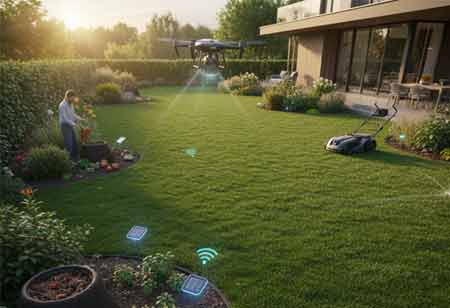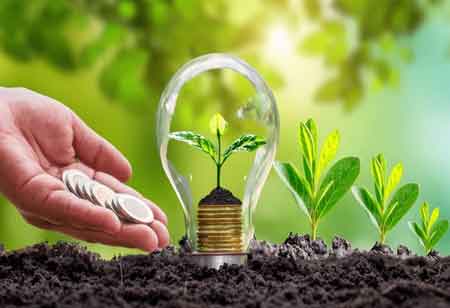Thank you for Subscribing to Agri Business Review Weekly Brief
Integrating Organic Lawn Care with Smart Soil Analysis Technologies
The future of green spaces relies on merging organic lawn care with smart soil analysis, combining technology and ecology to create resilient, eco-friendly landscapes.

By
Agri Business Review | Friday, October 31, 2025
Stay ahead of the industry with exclusive feature stories on the top companies, expert insights and the latest news delivered straight to your inbox. Subscribe today.
Fremont, CA: The future of green spaces hinges on the seamless integration of organic lawn-care principles with cutting-edge smart-soil analysis technologies. This powerful synergy promises landscapes that are not only aesthetically vibrant but also resilient, healthy, and genuinely eco-friendly.
The Catalyst: Precision with Smart Soil Analysis Technologies
While organic methods remain the cornerstone of ecologically sound gardening, their efficiency and precision have been significantly enhanced through the integration of smart technologies. Traditional guesswork—long the Achilles’ heel of resource management in horticulture—is being replaced by data-driven insights that enable more accurate, sustainable decision-making.
Among the most transformative innovations are IoT-enabled soil sensors, compact devices embedded in the ground that continuously monitor key parameters, including moisture levels, pH balance, nutrient concentrations (N-P-K), and temperature. This real-time data ensures precise irrigation and targeted soil amendments, minimizing waste and preventing over-application.
Complementing these sensors, advanced data analytics and AI platforms process and interpret the collected data, identifying trends and deviations from optimal conditions. Artificial intelligence can, for example, detect early signs of nutrient deficiency or signal when soil moisture reaches a critical threshold—prompting timely, localized organic interventions that preserve both resources and plant health.
Drone and satellite imaging have redefined landscape monitoring by providing high-resolution, spectral analyses of vegetation health. These technologies reveal subtle indicators of stress, disease, or uneven growth that escape the human eye, enabling landscapers to administer precise treatments to affected zones rather than resorting to broad-spectrum chemical applications. Together, these technologies represent a shift from intuition to intelligence—ushering in a new era of precision-driven, sustainable gardening.
The Integration: A Symbiotic Future
The true potential of sustainable landscaping lies in the seamless integration of ecology and technology, creating a system that is both intelligent and environmentally responsible. Smart sensors enable hyper-personalized organic feeding by detecting specific soil conditions, such as low organic matter or slight acidity, and recommending precise applications of organic amendments—like compost tea or bone meal—only where needed. This targeted approach enhances soil health while minimizing resource waste. Optimized water management is achieved through smart irrigation systems that combine real-time soil moisture data with local weather forecasts to automatically adjust watering schedules, reducing water waste by up to 50% compared to conventional systems. AI-driven diagnostics empower proactive health management by analyzing uploaded images or robotic mower data to identify early signs of fungal disease or weed intrusion. These timely alerts facilitate immediate, targeted interventions using biological or cultural methods—key principles of Integrated Pest Management (IPM)—before more aggressive measures become necessary. Together, these innovations transform landscaping from a reactive, chemical-dependent practice into a proactive, nutrient-cycling, and highly efficient ecological system.
The future of eco-friendly landscaping is not about choosing between nature and technology; it's about harnessing their complementary strengths. The marriage of organic lawn care for its deep-seated ecological benefits and smart soil analysis technologies for its unprecedented precision creates a sustainable model that benefits homeowners, businesses, and the planet. This convergence ensures that our green spaces are maintained with minimal environmental impact, maximizing resource efficiency and ecosystem health for generations to come.





